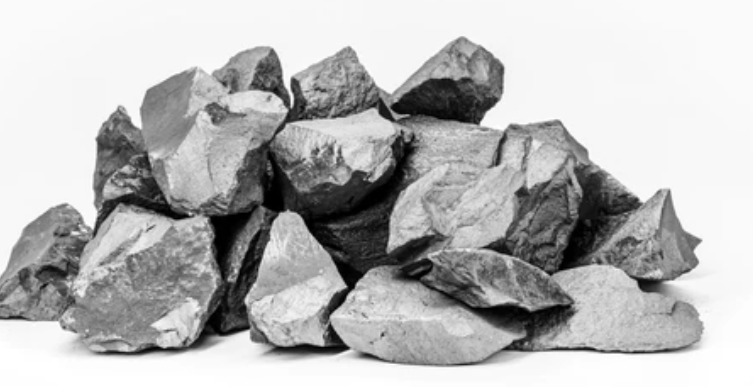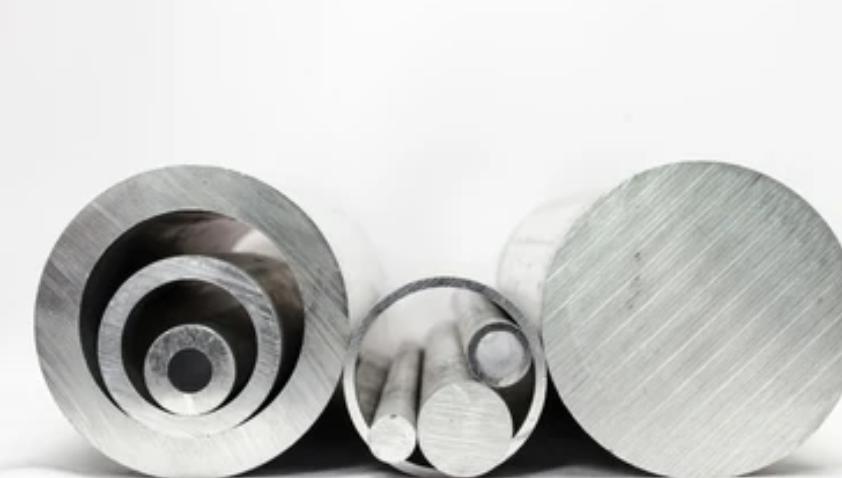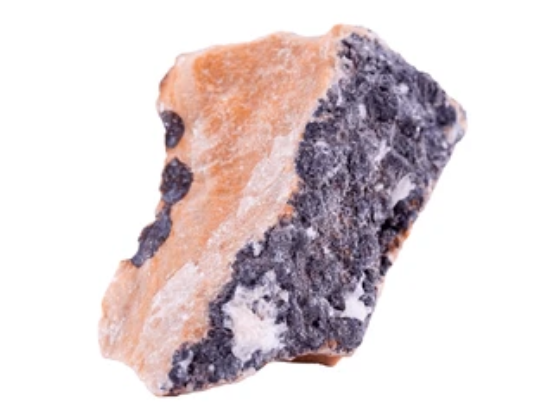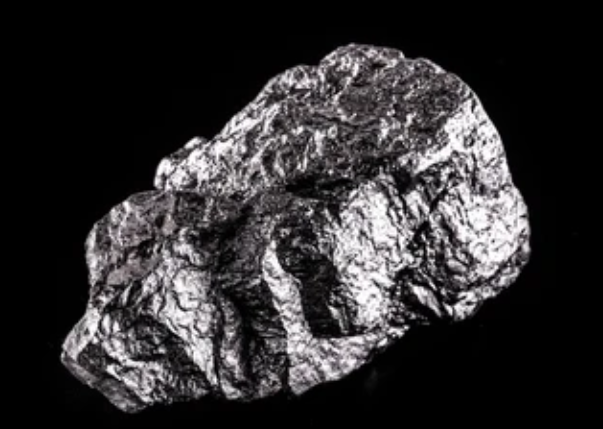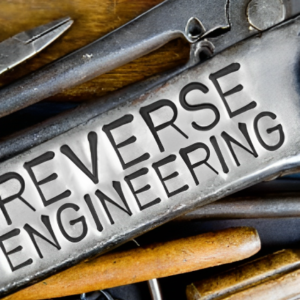Le métal est l'un des premiers matériaux utilisés par l'humanité pour soutenir plusieurs secteurs à partir de la construction à la technologie. L'utilisation de métaux qui sont classés sous des éléments chimiques ayant des propriétés métalliques ont des propriétés définies diversement qui ont sur plusieurs siècles la société moulée et a touché la civilisation de l'âge de pierre à l'ère contemporaine. Cela m'a choqué comment ils sont forts et en même temps ductile, bons conducteurs de chaleur, et admettre la formation d'alliage, les rendant ainsi adaptés aux utilisations apparemment infinies. Ici, nous allons discuter de 24 types de métaux et leurs particularités pour révéler à quel point ce matériel est polyvalent.
Que sont les métaux?
Le métal en tant qu'élément ou composé est principalement caractérisé par certaines qualités, notamment une conductivité électrique et thermique élevée, ductilité, et capacité d'alliage. Ils sont généralement brillants et ont une densité métallique à température ambiante pour la plupart d'entre eux sont des métaux, sauf le mercure. Les métaux sont des métaux parents qui sont largement disponibles dans la croûte terrestre sous une forme combinée avec d'autres éléments appelés minerais qui sont extraits et purifiés pour leur utilisation dans des applications industrielles. Il peut forger plusieurs liens et peut être conçu dans les produits.
Qu'est-ce que le métal ferreux?
Ferrous signifie largement composé de fer et est l'un des groupes les plus forts de métaux. Dans des conditions normales et lorsqu'elles sont exposées à l'humidité et à l'air, ils rouillent ou se corrodent à moins d'être protégés ou transformés en alliage. Ils comprennent; fonte d'acier. Ces métaux sont généralement utilisés dans la construction de bâtiments, dans les industries automobiles ainsi que dans les industries manufacturières.
Qu'est-ce que le métal non ferreux?
Les métaux non ferreux sont les métaux qui ne sont pas mélangés avec du fer ou ont des qualités limitées de fer contenues. Ceux-ci sont généralement plus durs contre la corrosion et l'oxydation que les métaux ferritiques et ont un poids plus léger, plus ductile, et posséder des caractéristiques de conduction électrique et thermique supérieures. Il s'agit notamment de l'aluminium, cuivre, plomb, zinc, or, argent, Et le titane et bien d'autres peuvent également être mentionnés ici. Les utilisations courantes des métaux non ferreux comprennent les industries aérospatiales des industries électriques et la fabrication de bijoux.
24 Différents types de métal et leurs propriétés
Voici une ventilation détaillée des propriétés et applications de 24 les métaux:
1. Aluminium (Al)
Propriétés:
- Poids léger: Excellent pour les applications où la force est requise sans masse ajoutée: Environ un tiers du poids de l'acier.
- Non magnétique: C'est utile en électronique car l'aluminium ne répond pas aux champs magnétiques.
- Résistant à la corrosion: Il forme une couche d'oxyde naturel qui la protège davantage de la corrosion.
- Ductilité: Il est malléable et pourrait être étiré dans les fils, ou des draps fines.
- Conductivité électrique et thermique: Il est conducteur à l'électricité et à la chaleur, mais pas aussi conducteur que le cuivre, Mais sa capacité à le faire la rend précieuse dans de nombreuses applications.
Utilisations:
Aérospatial, automobile, conditionnement, construction, électronique, marin, biens de consommation, Énergie renouvelable, Infrastructure de transport, Dispositifs médicaux, et applications de cuisine.
2. Fer (Fe)
Propriétés:
- Solide et durable: Un élément de construction de base en construction.
- Magnétique: L'un des métaux les plus magnétiques, Vital dans les moteurs et les générateurs.
- Lourd et dense: Il donne de la stabilité aux structures.
- Odieux: Non traité, Il rouille et est géré par revêtement ou alliage.
Utilisations:
- Dans les matériaux de construction, Automobile, Fabrication, Matériel lourd, Chemin de fer, Énergie, Défense & Militaire, Construction navale, Pipelines et infrastructures, Exploitation minière, Appareils électroménagers, Outils et matériel, Équipement agricole et fabrication de meubles
3. Acier
Propriétés:
- Haute résistance à la traction: Pour les structures porteuses, C'est essentiel.
- Résistance à la corrosion (acier inoxydable): Les alliages en acier inoxydable contenant du chrome empêchent la rouille.
- Variété de types: Il y a une variation de l'utilisation du carbone, inoxydable, Et les aciers en alliage.
Utilisations:
- Outils, appareils électroménagers, automobile, construction, et infrastructure.
4. Cuivre (Cu)
Propriétés:
- Excellent chef d'orchestre: Pour le câblage électrique, utilisé le plus souvent.
- Résistant à la corrosion: Avec le temps, il forme une patine sur la surface et empêche la corrosion plus profonde.
- Antimicrobien: Tue les bactéries en contact.
- Ductile et malléable: Peut être transformé en fils ou en tuyaux facilement.
Utilisations:
- Câblage électrique, plomberie, échangeurs de chaleur, Énergie renouvelable, Télécommunications, Équipement médical, Électronique, Machines industrielles, et outils médicaux.
5. Or (Au)
Propriétés:
- Malléable et ductile: Peut être façonné en feuilles minces.
- Non réactif: Il ne ternissait pas et ne corrode pas, ce qui la rend précieuse en électronique.
- Excellent chef d'orchestre: Il mène de l'électricité efficacement.
- Réflexion et brillant: Utilisé souvent pour les applications esthétiques en bijoux.
Utilisations:
Bijoux, électronique, devise, dentisterie, et aérospatiale.
6. Argent (Ag)
Propriétés:
- Conductivité électrique la plus élevée: Plus cher que le cuivre mais pas aussi bon que le cuivre.
- Conductivité thermique: Conduit très bien la chaleur.
- Ductile et malléable: Ils peuvent facilement se former en couches minces.
- Antimicrobien: Utilisé également dans les applications médicales pour les soins des plaies.
Utilisations:
- Électronique, bijoux, vaisselle, miroir, instruments médicaux.
7. Titane (De)
Propriétés:
- Rapport résistance/poids élevé: Plus léger que l'acier mais aussi fort.
- Résistant à la corrosion: Cela forme une couche d'oxyde passive qui empêche la rouille.
- Biocompatible: Il est sûr à utiliser dans le corps humain.
- Non magnétique: Il n'interfère pas avec les champs magnétiques.
Utilisations:
- Implants médicaux, équipement sportif, aérospatial, et vélos haut de gamme.
8. Nickel (Dans)
Propriétés:
- Résistant à la corrosion: Ajoute de la durabilité aux alliages.
- Ferromagnétique: L'utilisation dans l'électronique spécifique est autorisée par leurs propriétés magnétiques.
- Ductile et dur: Il peut être utilisé dans des environnements à stress élevé.
Utilisations:
Production en acier inoxydable, pièces, piles, et électronique.
9. Plomb (Pb)
Propriétés:
- Densité élevée: Utilisé pour les applications de poids et de stabilité.
- Doux et malléable: Peut être façonné facilement.
- Résistant à la corrosion: Ajout de longévité pour diriger les applications, pas facilement corrodé.
- Point de fusion bas: Fusible ou moulable avec peu de chaleur.
Utilisations:
Blinchage de rayonnement, piles, et alliages.
10. Platine (Pt)
Propriétés:
- Résistant à la corrosion: L'oxydation ne se produit même pas dans des conditions extrêmes.
- Point de fusion élevé: Bon pour les applications à haute température.
- Catalytique: Il peut faciliter les réactions chimiques sans être consommée.
- Dense et malléable: Aussi facilement travaillé avec et durable.
Utilisations:
Convertisseurs catalytiques, bijoux, électronique, et équipement de laboratoire.
11. Zinc (Zn)
Propriétés:
- Résistant à la corrosion: Utilisé comme revêtement protecteur souvent.
- Point de fusion bas: Facile à mouler et à travailler avec.
- Brarges à température ambiante: Il devient plus malléable à des températures plus élevées.
- Réactif: Forme une couche d'oxyde, qui a tendance à le protéger d'une nouvelle dégradation.
Utilisations:
C'est un élément trace vital du corps et en acier galvanisant, alliages de moulage, et batteries.
12. Chrome (Cr)
Propriétés:
- Résistant à la corrosion: Ne rouille pas facilement même dans des conditions difficiles.
- Éclat élevé: Ça donne un brillant, surface réfléchissante.
- Dur et cassant: Il est fragile mais ajoute de la dureté aux alliages.
- Forme la couche d'oxyde: Il aide à protéger le métal en dessous.
Utilisations:
- Acier inoxydable, placage chromé, et pigments.
13. Magnésium (Mg)
Propriétés:
- Poids léger: Réduit la charge dans les alliages d'environ les deux tiers du poids de l'aluminium.
- Inflammable: Il est utilisé dans les fusées car il brûle à des températures élevées.
- Ductile quand il est allié: Le magnésium est fragile, Mais l'alliage se renforcera.
- Bon chef d'orchestre d'électricité: Utilisé dans certaines applications électriques.
Utilisations:
Automobile, aérospatial, électronique, feux d'artifice.
14. Cobalt (Co)
Propriétés:
- Dur et magnétique: C'est idéal pour les aimants et les alliages durables.
- Résistant à la corrosion: Il résiste très bien dans des environnements à haute température stress.
- Point de fusion élevé: Bon pour les superalliages.
- Catalytique: Processus chimiques et environnementaux.
Utilisations:
Alliages, pigments, aimants, et batteries.
15. Tungstène (W)
Propriétés:
- Point de fusion le plus élevé: Il peut résister à une chaleur extrême.
- Très dur et dense: Il peut couper d'autres métaux même sous stress.
- Résistant à la corrosion: Ternire rarement.
- Haute résistance à la traction: Même lorsqu'il est étiré, Il résistera à la rupture.
Utilisations:
Applications militaires, contacts électriques, filaments, et outils de coupe.
16. Molybdène (Mo)
Propriétés:
- Point de fusion élevé: Paramètres à haute température.
- Renforce les alliages: Aucune augmentation de la ténacité, Mais une meilleure résistance à porter.
- Résistant à la corrosion: Tolère bien les environnements agressifs.
- Bon chef d'orchestre: Il aide également un transfert de chaleur efficace dans les alliages.
Utilisations:
Moteurs et éléments de chauffage, et alliages en acier.
17. Palladium (PD)
Propriétés:
- Catalytique: Accélère les réactions chimiques.
- Absorbe l'hydrogène: Le stockage et les piles à combustible sont uniques.
- Résistant à la corrosion: Ternire rarement.
- Ductiles: Ils peuvent être formés en couches minces sans se casser.
Utilisations:
Électronique, bijoux, piles à combustible, et convertisseurs catalytiques.
18. Mercure (HG)
Propriétés:
- Liquide à température ambiante: Unique parmi les métaux.
- Densité élevée: Plus lourd que la plupart des métaux.
- Conducteur: Conduira bien de l'électricité.
- Toxique: Nécessite une manipulation prudente.
Utilisations:
Éclairage fluorescent, thermomètres, et baromètres.
19. Bismuth (Bi)
Propriétés:
- Alternative non toxique à la tête: Sûr dans les aliments et les usages médicaux.
- Haute densité et point de fusion faible: Idéal pour les alliages à faible fonderie.
- Non réactif: Ça ne rouille pas et ne tient pas bien.
- Développe la solidification: Utile dans les moules.
Utilisations:
En tant que remplacement de plomb respectueux de l'environnement, en pharmaceutique, produits de beauté, et alliages.
20. Rhodié (Rh)
Propriétés:
- Réfléchissant: Souvent utilisé dans les miroirs.
- Résistant à la corrosion: Ne ternissait pas facilement.
- Catalytique: Aide à décomposer les polluants.
- Point de fusion élevé: Tolère des températures extrêmes.
Utilisations:
- Bijoux, convertisseurs catalytiques, électronique.
21. Cadmium (CD)
Propriétés:
- Résistant à la corrosion: Les conditions difficiles résistent bien.
- Toxique: En raison de risques pour la santé, utilisation limitée.
- Conducteur: Spécifiquement efficace pour une utilisation dans les applications électriques.
- Fragile: Se casse facilement sous le stress.
Utilisations:
Pigments, piles, et revêtements.
22. Antimoine (Sb)
Propriétés:
- Fragile et cristallin: Il se casse facilement mais est stable, métal solide.
- Mauvais chef d'orchestre: Il n'est pas conducteur pour un métal.
- Augmente la dureté des alliages: Souvent allié pour les rendre rigides.
- Résistance à la corrosion modérée: Pas aussi résistant que les métaux, comme le platine, mais stable.
Utilisations:
Piles, électronique, et semi-conducteurs.
23. Vanadium (V)
Propriétés:
- Rapport résistance/poids élevé: Il ajoute de la force, Sans beaucoup de poids.
- Résistant à la corrosion: Ne rouille pas facilement.
- Ductile et malléable: Peut être formé sans être brisé.
- Catalytique: Réactions chimiques en particulier dans la production d'acide sulfurique.
Utilisations:
Production chimique, composants aérospatiaux, outils, et alliages en acier à haute résistance.
24. Lithium (Li)
Propriétés:
- Métal le plus léger: Flotte sur l'eau, densité très faible.
- Très réactif: Il réagit avec l'eau et l'air pour qu'il doit être stocké soigneusement.
- Potentiel électrochimique élevé: Il donne sa valeur dans les applications de batterie.
- Doux et ductile: Il est facile à façonner et peut être coupé avec un couteau.
Utilisations:
- Ils comprennent des batteries rechargeables (par exemple., lithium-ion pour les véhicules électroniques et électriques), Médicaments pour les troubles de l'humeur, et quelques alliages hautes performances.
Conclusion
En conclusion, De nombreuses industries dépendent fortement des métaux pour leurs propriétés en raison de leur faible poids et de leur résistance à la corrosion, L'aluminium est un bon choix pour les industries aérospatiales et automobiles, et le fer et l'acier sont nécessaires pour que la construction et les infrastructures aient une résistance et une durabilité. Le câblage électrique utilise la bonne conductivité du cuivre, tandis que l'or, platine, et l'argent ont une double utilisation pour l'électronique et les bijoux car ils conviennent également à sa conductivité et à son apparence agréable.
FAQ
Quels sont les métaux ferreux et quelles sont les non-ferles?
Les ferrométaux contiennent du fer et sont susceptibles de rouiller tandis que les métaux métalliques non ferro ne contiennent pas de fer et ne sont donc pas susceptibles de rouiller autant que les métalliques ferro.
Pourquoi les métaux non ferreux sont-ils choisis pour une utilisation dans l'aérospatiale?
Les matériaux ferreux et non ferreux - en aluminium et en titane - sont doux, léger, ont une forte résistance à la corrosion, et sont des matériaux forts adaptés à une utilisation aérospatiale.
Comment empêcher la rouille sur les métaux ferreux?
Comme il réagit directement avec l'air, Évitez d'utiliser du fer et de l'acier ou de le peindre, Utiliser des revêtements protecteurs, ou utilisez des alliages sans rouille ou réviser régulièrement.
Tous les métaux non ferreux peuvent-ils être recyclés?
Oui, Des matériaux tels que l'aluminium et le cuivre sont faciles à recycler, Et les utiliser préserve de nombreuses ressources.





